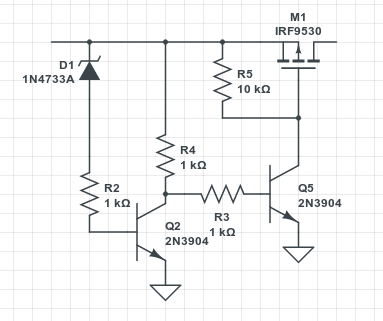MOSFET Overvoltage Clamping Circuits – A Simple Guide for Hobbyists and Engineers

When working with MOSFETs (Metal-Oxide-Semiconductor Field-Effect Transistors), one common issue is overvoltage. When a voltage spike exceeds the MOSFET’s maximum rating, it can damage the device, causing permanent failure. Fortunately, you can prevent this with an overvoltage clamping circuit.
The Problem :
Overvoltage can occur due to sudden power surges or switching transients in circuits. This can quickly exceed the voltage rating of your MOSFET, leading to overheating or even destruction. To solve this, you can use a clamping circuit that limits the voltage to a safe level, protecting your MOSFET and ensuring reliable operation.
Example :
Imagine you’re using a MOSFET in a motor driver circuit, and the motor generates a voltage spike when switching. This spike can damage the MOSFET. By adding a diode or Zener diode in parallel with the MOSFET, you can clamp the voltage, ensuring it doesn’t exceed the MOSFET’s safe threshold. The diode will conduct when the voltage exceeds a set value, preventing further damage.
Sample Calculation:
Suppose you’re using a 12V power supply and a Zener diode rated at 5V.
If the MOSFET’s maximum rating is 10V, choose a resistor that limits current during clamping.
For instance, using Ohm’s Law (V = IR), if the diode conducts at 10V, and the power supply is 12V, the resistor value should be approximately 100Ω to limit current.
Product Suggestions :
To build your own overvoltage clamping circuit, you can find quality components like MOSFETs and Zener diodes that are Made in India. Shop for MOSFET and Zener Diode at SMARTX PRO KITS
Shop now at SmartXProKits.in to support India’s innovative prototyping community. Support our work and India’s innovation—buy from our Make in India site!



















